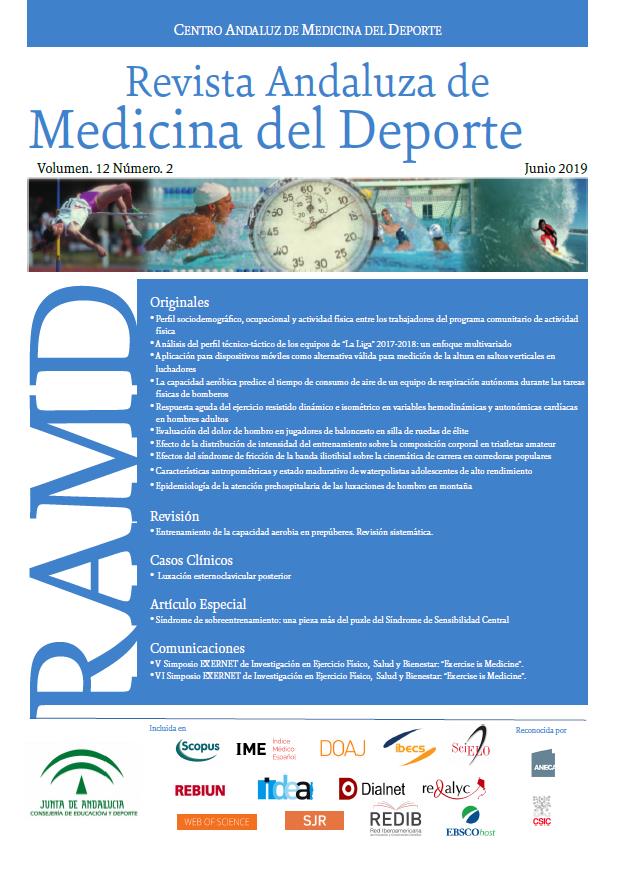Effects of iliotibial band syndrome on running kinematics in female amateur runners
Abstract
Objective: The purpose of this retrospective study was to determine how iliotibial band syndrome influences hip, knee, ankle and rear foot joint angle in female runners with iliotibial band syndrome and female runners with no history of knee injury at the moment of study.
Method: In this retrospective study, the sample was composed of 30 recreational female runners (15 healthy runners and 15 with iliotibial band syndrome). A 3-D kinematic analysis was performed to measure 3D joint angles of the lower limb.
Results: The iliotibial band syndrome group exhibited a reduced knee flexion angle at heel strike (13.48º vs. 17.17º p = 0.02) and greater hip adduction at toe-off (-5.65 vs. -2.68 p = 0.03) as compared to controls. In contrast, no significant differences were observed in peak hip adduction (p = 0.95), maximum knee internal rotation (p = 0.80) and maximum rearfoot eversion (p = 0.16) between the two groups.
Conclusion: Female recreational runners with ITBS exhibit a specific kinematic profile suggestive of restricted movement at several planes.


